big fireworks, fireworks, hanabi, japan fireworks
Big Fireworks: Why Does Japan Love Them So Much?
James Lau
Posted on June 29, 2023
Share:
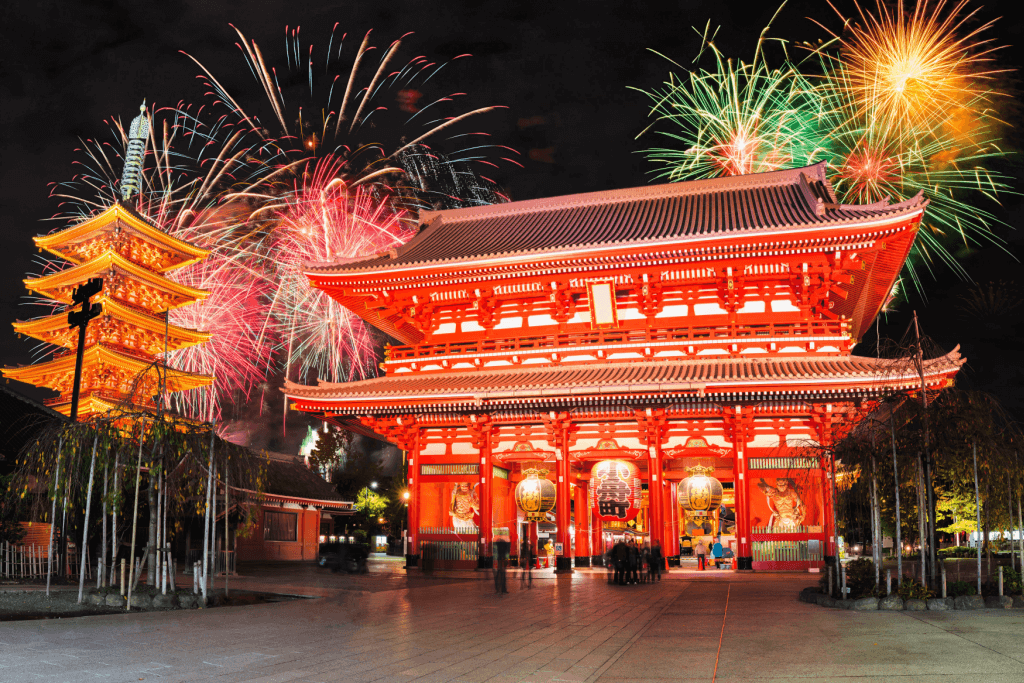
Fireworks, or “hanabi” in Japanese, have captivated the hearts of the Japanese people for centuries. From their rich cultural heritage to their aesthetic beauty, fireworks are unique in the country’s traditions and celebrations. Let’s explore why they’re integral to Japanese culture. We’ll delve into their historical significance, captivating visual allure, association with seasonal celebrations, and role as entertainment.
A Historical Tapestry of Tradition and Culture
Fireworks have a long history in Japan, dating back to the Muromachi period in the 15th century. The first documented fireworks in Japan date back to 1447 when Kanetomo Banrikoji, a nobleman, witnessed a show at Jokai Temple. These early fireworks used bamboo frames. As a result, they were well received and believed to have come to Japan from China through trade.
In the following centuries, more fireworks were shown and used by foreign traders and missionaries. Portuguese missionaries reportedly used them in Oita Prefecture in 1582 as part of a grand public event to attract converts to Christianity. Their use became more widespread during the Sengoku period, accompanied by fireworks production in Japan.
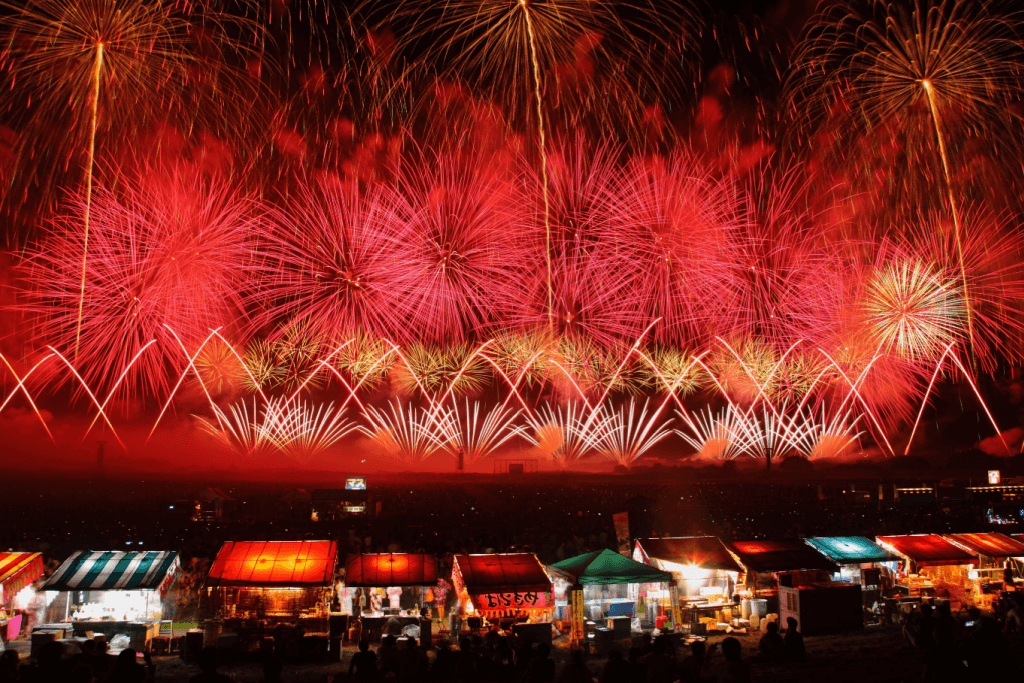
During the Edo period, specialized fireworks shops emerged, particularly in the Mikawa region. The Tokugawa shogunate officially authorized these shops to produce and store gunpowder. The area around Okazaki in Aichi Prefecture became a center for the development of fireworks as well, but the Mikawa region gained a reputation for its craftsmanship.
Moreover, this era saw the emergence of firework specialists like the Keya and Tamaya families, who played a significant role in shaping the tradition, including one of Tokyo’s most famous festivals, the Sumida River Fireworks Festival.
Why do people like fireworks so much?
Talented artisans in Japan dedicated themselves to perfecting the art of creating fireworks. They spent countless hours improving their techniques and designs, resulting in magnificent displays showcasing their creativity and skill.
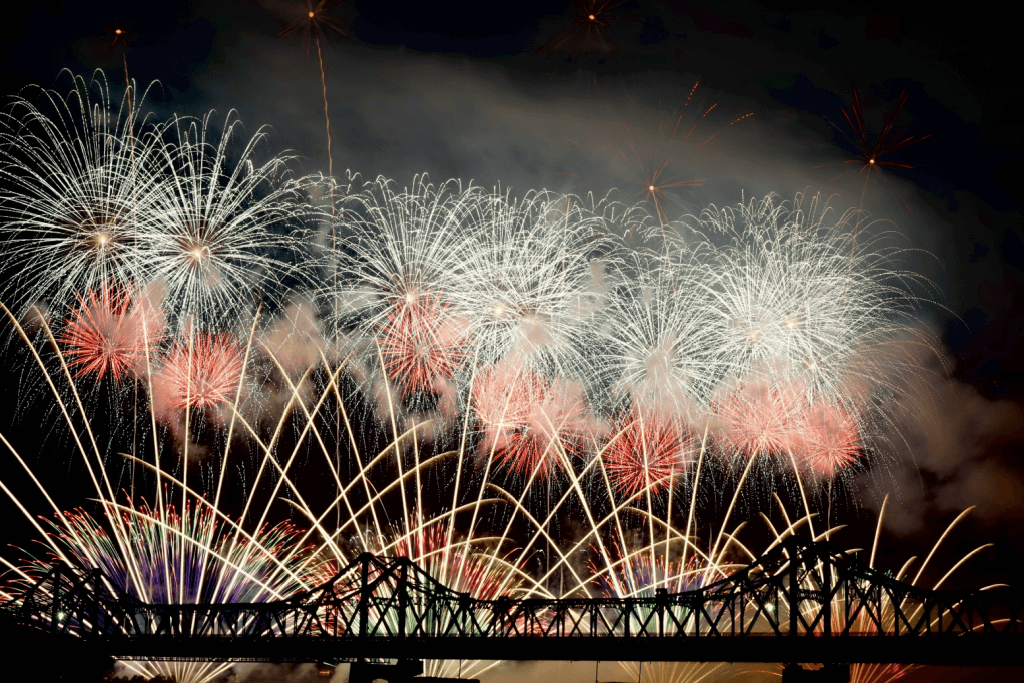
Fireworks became a way for artistic expression, allowing the pyrotechnicians to create breathtaking scenes in the night sky. Through careful planning and coordination, each explosion became a captivating spectacle that touched the hearts of all who witnessed it.
Moreover, their popularity in Japan proves their ability to unite people and create joyous moments. Even during difficult times, the tradition of fireworks continued, offering a temporary escape from life’s challenges. As a result, the vibrant explosions lighting up the sky became symbols of hope and resilience. As a result, they remind people of their breathtaking history.
Are you looking to enjoy some great food this summer? Check out Sakuraco! Sakuraco delivers traditional Japanese snacks, sweets, tableware, and more from local Japanese makers right to your door, perfect for a pleasant snack time at home!
Why are fireworks so pretty?
They’re famous because of their jaw-dropping visual appeal, leaving people spellbound. When the show begins, the night sky transforms. It becomes a significantly vibrant masterpiece of intricate designs and mind-blowing patterns. The pyrotechnicians behind these magical displays are true artists, dedicating endless hours to perfecting their craft.
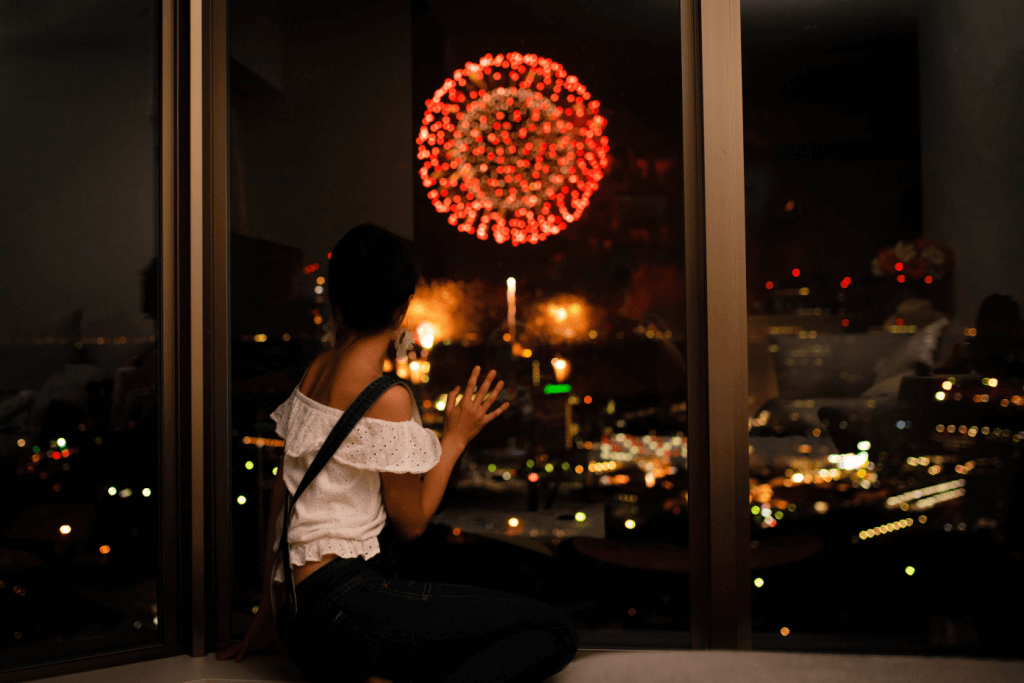
Watching these displays feel like watching a moving work of art because skilled artisans carefully select the materials and chemicals needed to create the desired effects. The sky comes alive with a symphony of colors, ranging from bold reds and blues to radiant yellows and greens. They explode in a perfectly timed sequence to create a beautiful visual symphony.
But it doesn’t stop there! The designs of Japanese fireworks are simply extraordinary. Pyrotechnicians utilize their creativity and expertise to shape the bursts into captivating patterns that resemble blooming flowers. With each explosion, a fleeting moment of pure beauty emerges. It captivates the audience, eager for the next burst of artistic brilliance on a hot summer night.
What are some significant festivals in Japan?
One famous event is the Sumida River Fireworks Festival in Tokyo, where over 20,000 fireworks light up the sky above the iconic Sumida River, creating a mesmerizing display of beauty. It happens every year on the last Saturday of July and attracts millions of spectators.
The festival has a long history dating back to the Edo period when the Keya and Tamaya families, two prominent fireworks families, competed against each other to create the most impressive displays. Today, the festival showcases breathtaking shows from various renowned companies created by pyrotechnicians.

The Omagari Fireworks Competition in Akita Prefecture is a notable event that showcases the skills and artistry of pyrotechnicians from all over Japan. The competition began in 1910 and encouraged friendly rivalry and improvement among artisans.
One of the festival’s highlights is using “star mines” or “shells,” which explode in the sky to create stunning patterns and formations. The event has become a symbol of Japan’s rich summer culture and attracts participants and spectators nationwide.
At Huis Ten Bosch, a Dutch-style theme park in Japan, the Fireworks × Laser × Music event provides visitors a unique and exciting experience. The show also has laser lights and music to create a mesmerizing performance.
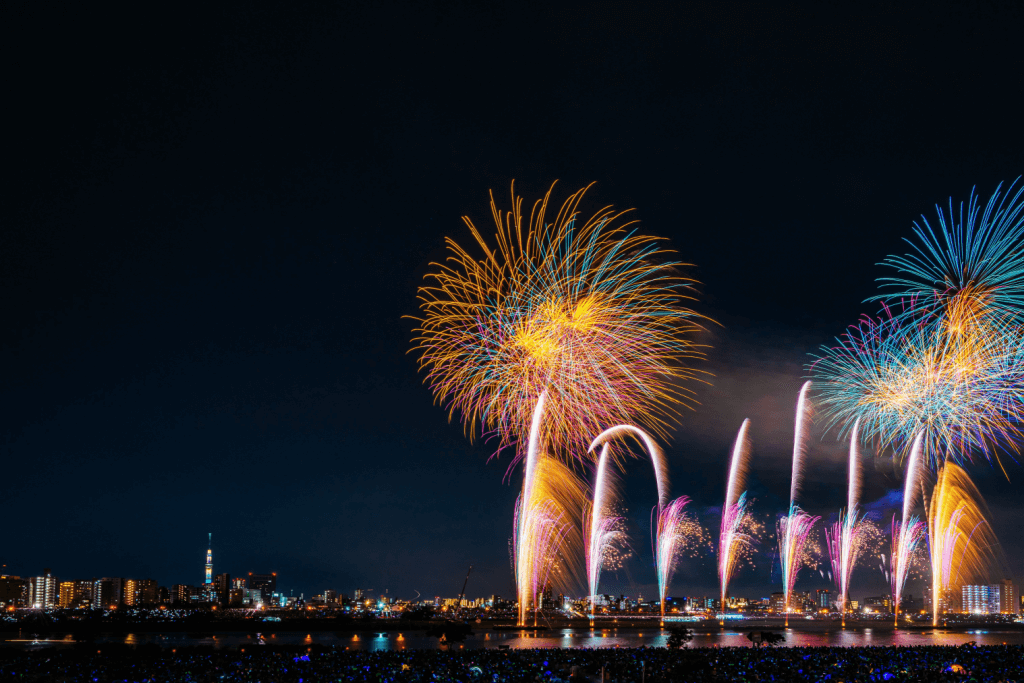
Fireworks have become an integral part of Japanese culture, infusing festivities with a touch of magic and spectacle. They symbolize unity, resilience, and the enduring spirit of the Japanese people. The love for them runs deep in the hearts of the Japanese as they continue to cherish and appreciate the historical, visual, and celebratory aspects of this cherished tradition. Have you ever been to a fireworks festival in Japan before? Let us know in the comments below!

Discover authentic flavors with Sakuraco
Get Sakuraco 

Discover authentic flavors with Sakuraco
Get Sakuraco 
Related Articles

Steam Train in Shizuoka: Riding the Oigawa Railway
For travelers who love history, beautiful views, and cozy retro vibes, this steam train is one of Shizuoka’s most charming treasures, with some of the best views. If you want to know more about this train, keep reading below!

Nara Japan: The Amazing Legend of the Sacred Dragon
In Japanese culture, dragons are spiritual beings that represent strength, prosperity, and a harmonious balance with the natural forces. Nara, Japan, has a unique story associated with sacred ponds and revered shrines throughout the region.

Nambu Tekki: Morioka’s Amazing Iron Craft
In the historic city of Morioka, Iwate Prefecture, a craft with over 400 years of history continues to captivate with its rustic beauty and practical charm. Nambu tekki, or Nambu cast iron, refers to traditional ironware, such as teapots, kettles, and decorative pieces, that embody the spirit of Tohoku craftsmanship.

Ebisu: The Cheerful Guardian of Luck and Prosperity
Religion in Japan involves a dizzying array of spirits and beings. These gods are inspired by ancient tales and used to symbolize nature’s bounty. However, they also profoundly impact daily life and are often sought out for help in challenging times



